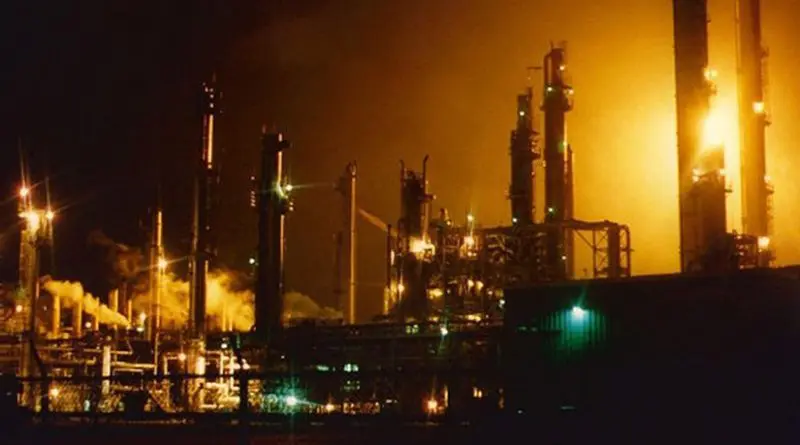Global Oil Slump: Challenges To Future – Analysis
Global oil prices have come down considerably, Brent Crude, a pricing benchmark for more than half of the world’s oil, has dropped 45 percent this year and slid below US $60 a barrel this week for the first time since 2009. Most of the world’s oil is now selling for about US $56 to US $61 a barrel. But not all oil is created equal. In the Middle East, it’s cheaper to produce, at a cost of less than US $30 a barrel on average, while in the Arctic, producing a barrel costs US $78 on average. From Canada’s oil sands, it’s an average of US $74 a barrel. And because those are averages, some companies have costs that are higher — which means there could be drillers currently producing crude at a loss. In the US, the oil drilling boom is due largely to technologies like hydraulic fracturing, or fracking, used to force oil from shale formations deep underground. Producing this oil, costs an average of US $62 a barrel.
Recent falls in oil prices have altered the financial dynamics of oil extraction. Certain sources of oil entail lower costs than others. For example, conventional pumped oil extraction in high pressure onshore wells costs relatively little to set up and operate, whereas remote oil fields beneath icy seas require specialized equipment and override wages to locate and extract. When the oil price rises, more difficult oil fields become economically viable, when the price falls, the margins of extraction remove the viability of certain sources.
Hydraulic fracturing in the United States has provided an unexpected source of oil. However, it has contributed to an oversupply that could soon cause fracking production to shut down; as a matter of fact applications for new U.S. well permits dropped by nearly half last month. US oil production is also slowing down because of low oil prices. If prices collapsed to 2008 levels, when oil was fetching less than US $35 a barrel, drillers might be forced to take more drastic steps like shutting down production.
A major factor influencing the cost of extraction is the lifecycle of each type of oil source. Saudi wells last longer. There is more oil to pump within each cavity and so the cost of setting up that well can be written off over a longer period than the cost of setting up a fracking and horizontal drilling operation. A long-term producer can also write off the cost of distribution methods over a longer period. So if a new well can be built alongside existing roads and pipelines, that method will end up cheaper in the long run than fracking in remote and previously unexplored areas where a new pipeline or railroad infrastructure adds to setup costs.
American oil producers could just keep increasing capacity infinitely, because someone else would adjust their output to make room in the market. Prospects looked good initially for expansion because cutbacks in Organization of Petroleum Exporting Countries (OPEC) production meant America could just keep taking a larger and larger share of the market.
But OPEC decided in late November to keep its output unchanged, in spite of a global supply surplus fed partly by production of shale oil in North America. Saudi Arabia led a group of Arab monarchies in opposing calls by Venezuela and other OPEC members, whose economies are threatened by the fall in oil prices, to cut output. OPEC supplies about 40 percent of the world’s oil. Saudi Arabia’s plan to continue spending on social projects and security increases the likelihood that the world’s biggest oil exporter will stick with OPEC’s policy of maintaining output even as crude prices plunge. Oil has slumped more than 20 per cent since OPEC decided at a meeting last month to maintain its output quota. Iran has followed Saudi Arabia, Iraq and Kuwait in offering wider discounts for sales to Asia. U.S. producers are pumping crude at the fastest pace in three decades amid a shale boom.
A falling oil price punishes Russia’s economy and brings economic realities to calculations over whether to invest in further oil exploration in the Arctic. Russia, the world’s second-biggest oil exporter, had been gearing up for a major shift into hard-to-reach oil production as conventional oil runs low. Now these plans look harder to achieve. Backed by tax breaks and government incentives, new projects gather pace on Russia’s Pacific and Arctic shelves, as well as the vast Bazhenov shale oil formation in Western Siberia. However, slumping prices risk making these efforts unviable. In addition, sanctions have banned Western firms from supplying Russia with expertise or equipment for drilling hard-to-reach oil. Without Western financing and equipment, a low oil price is just one more piece of bad news for Russian oil and gas industry.
At the same time that oil supply surged, demand for oil dropped. China has maintained the illusion of growth over the past year by over-ordering raw materials. Now they need to absorb their stocks, which take a large part of world demand for oil out of the market. Europe’s growth is stuttering, removing more demand. Economists calculate that for every 10 per cent drop in the price of oil, the world’s GDP will grow by 0.1 per cent. Evidently, the current falls in oil price will eventually correct the lack of demand in the market and supply and demand will return to equilibrium.
The global crash in crude prices is reverberating through the oil and gas industry, pressuring producers to curtail investment to protect profits and avoid cuts to dividend payments. Projects in the Canadian oil sands, offshore fields in Norway and drilling-intensive U.S. shale deposits are among the most vulnerable as oil prices come perilously close to production costs. The world’s largest oil companies have rarely spent so much for so little reward.

